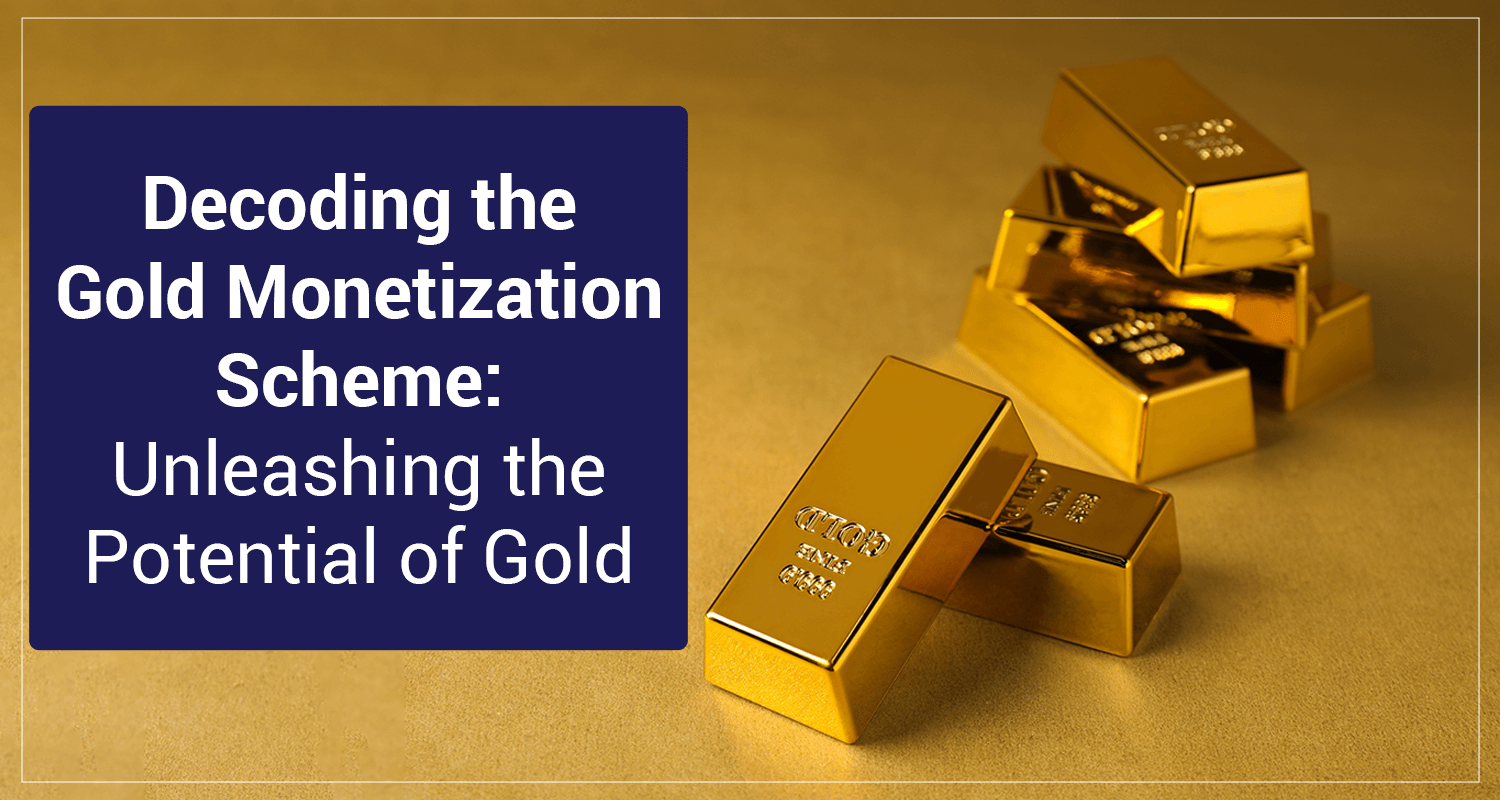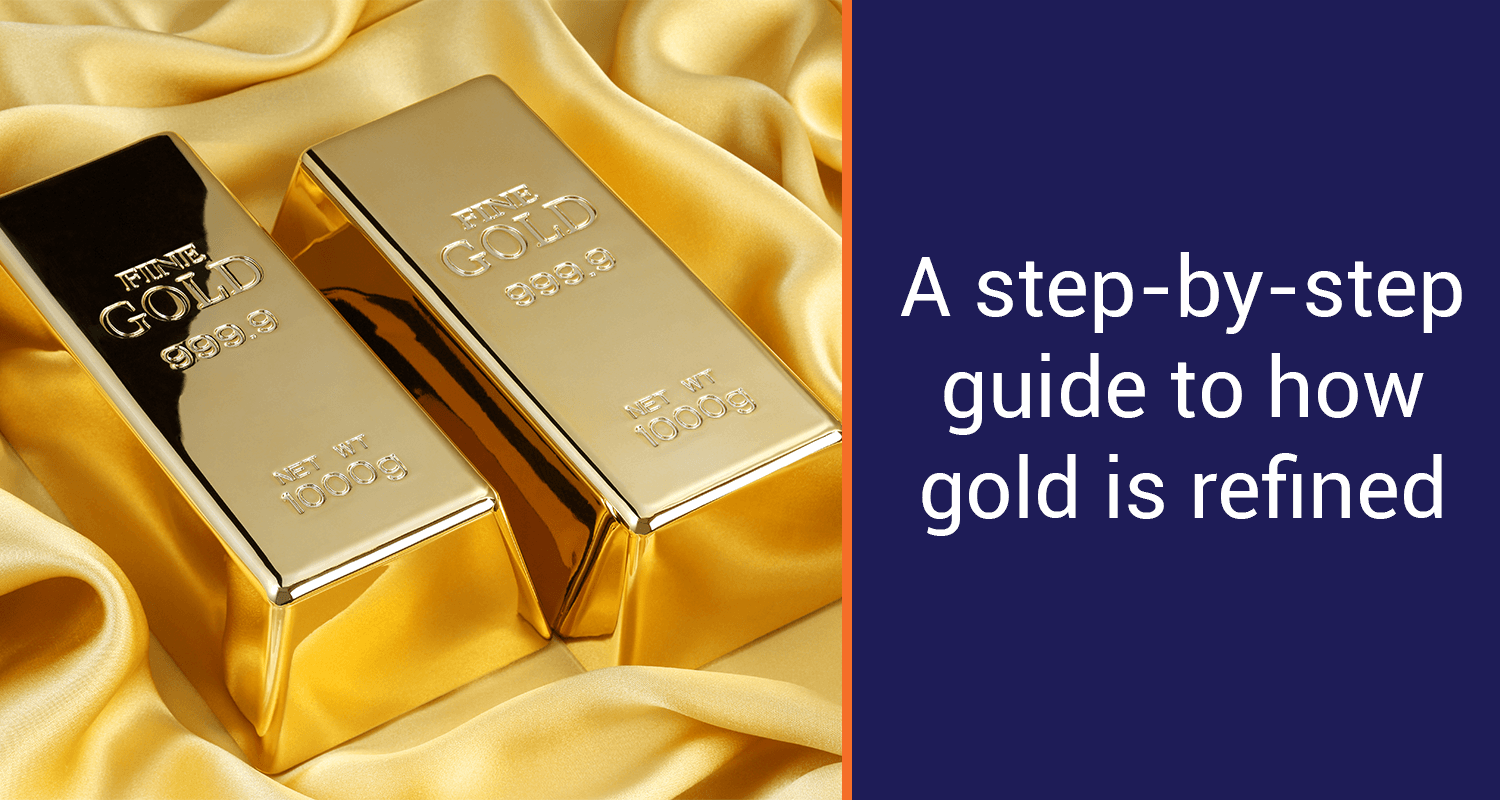Gold Monetization Scheme: Meaning, Types, Benefits

In India, where lots of people love using gold, making the most of this valuable metal is like a smart plan. The Gold Monetization Scheme, which started on September 15, 2015, is like a new idea to help people earn extra money from their gold sitting in bank lockers.
The main objective of the plan is to get people to deposit their gold with banks so that it's not just sitting there doing nothing. It's a bit like giving new life to gold that's not being used. This plan is like an upgraded version of the old Gold Deposit Scheme and Gold Metal Loan Scheme, and it's meant to replace the Gold Deposit Scheme from 1999. The idea is to encourage people to put their unused gold in banks, making gold more useful and valuable in the Indian economy.
What is the Gold Monetization Scheme?
The Gold Monetization Scheme was introduced on September 15, 2015. It lets people earn extra money from their gold, rather than sit in the locker and gather dust.
The main objective of the plan is to get people to deposit their gold with banks so that it's not just sitting there doing nothing. It's a bit like giving new life to gold that's not being used. Consider it as an upgraded version of the old Gold Deposit Scheme and Gold Metal Loan Scheme, and it's meant to replace the Gold Deposit Scheme from 1999. The idea is to encourage people to put their unused gold in banks, making gold more useful and valuable in the Indian economy.
Types of Deposits
Investors have the flexibility to deposit gold for short, medium, and long terms within the Gold Monetization Scheme. Two main deposit options are available: Short Term Bank Deposits (STBD) and Medium and Long Term Government Deposit (MLTGD).
Short Term Bank Deposit (STBD):
- Tenure ranges from one to three years.
- Allows broken tenures such as one year, three months, two years, four months, etc.
- Lock-in periods and penalties are determined by designated banks.
- Banks have the freedom to set interest rates on these deposits.
Medium and Long-Term Government Deposit (MLTGD):
- Deposits are accepted by designated banks on behalf of the Central Government.
- Maturity periods are five to seven years for the medium term and 12 to 15 years for the long term.
- Interest rates are 2.25% p.a. for the medium term and 2.50% p.a. for the long term.
- Interest is paid on March 31 every year.
- Lock-in periods for these deposit schemes are three years and five years, respectively.
Get Gold Loan at the comfort of your home
Apply NowKey Features of Gold Monetization Scheme:
- Minimum deposit of 10 grams of raw gold (bar, coin, or jewellery).
- No maximum limit on investment.
- Premature withdrawal is allowed after a minimum lock-in period.
- All designated commercial banks can implement the scheme.
- Short-term deposits can be redeemed in gold or rupees at current rates during redemption. Penalties may apply for premature withdrawal after the lock-in period.
Gold Monetization Scheme Eligibility
Residents of India, including individuals, Hindu Undivided Families (HUF), companies, charitable institutions, proprietorship and partnership firms, trusts (including Mutual Funds or Exchange Traded Funds), Central Government, State Government, and other entities owned by the Central or State Government are eligible for the Gold Monetization Scheme. Mutual Funds or exchange-traded funds should be registered under the Securities and Exchange Board of India (SEBI) Mutual Fund Regulations.Merits of Gold Monetization Scheme
Investing in the Gold Monetization Scheme offers several advantages:
- Earn interest on idle gold, enhancing savings.
- Contributes to reducing the country's gold imports.
- It provides flexibility to access your investment or gold as needed.
- Allows starting an investment with as low as 10 grams of gold.
Gold Monetization Scheme: Application Process
To participate in the Gold Monetization Scheme, an eligible depositor can initiate the process by opening a Gold Deposit Account with any designated bank, adhering to the Know Your Customer (KYC) norms.
Typically, deposits within the scheme are carried out at the CPTC/GMS Mobilisation, Collection & Testing Agent (GMCTA). These entities are responsible for testing the purity of the customer's gold in their presence. Subsequently, they issue deposit receipts for standard gold of 995 fineness to the depositor and inform the customer's respective bank about the acceptance of the deposit.
The designated bank, upon receiving the deposit receipt, promptly credits the customer's account, whether it be a Short-Term Bank Deposit (STBD) or Medium/Long-Term Government Deposit (MLTGD). This credit occurs either on the same day as the receipt by the depositor or within 30 days of the gold deposit at CPTC/GMCTA, irrespective of whether the depositor submits the receipt.
Following this, the accrual of interest on deposits commences either from the date of the conversion of deposited gold into tradable gold bars or 30 days after the gold's receipt at CPTC/GMCTA, depending on which event occurs earlier.
The Gold Monetization Scheme nationally unlocks gold's potential for economic growth, financial gains, and increased productivity.
On a national level, the GMS holds the potential to:
- Minimize gold imports: Reduced reliance on imports strengthens the rupee and stabilizes the current account deficit.
- Boost domestic gold markets: Increased gold availability fuels the jewellery industry, creating jobs and stimulating economic growth.
- Enhance financial inclusion: Extends the reach of formal financial services to individuals holding gold wealth, promoting financial stability and inclusivity.
Benefits of Gold Monetization Scheme
On an individual basis the GMS helps in
- Providing an option to gain returns on gold which would otherwise be lying idle in the lockers
- Encashing the value of gold when it appreciates
- Enhancing the flexibility of investing in any form of gold, be it coins, bars or jewellery. Plus there is no maximum limit of gold that can be invested in GSM
- Enjoying tax benefits as there is no need to pay tax on capital gains on the profits earned under this scheme. On maturity, the interest and maturity cash payment are exempt from income tax as well as wealth tax
Potential Concerns
While the GMS promises undeniable benefits, certain aspects merit consideration. The melting of deposited jewellery into standardized units might raise concerns about the sentimental value attached to heirloom pieces. However, it is crucial to remember that the gold's monetary value remains intact, and individuals can redeem their gold in standardized form at the end of the chosen tenure. Additionally, tax implications on earned interest should be factored into the decision-making process.Conclusion
The Gold Monetization Scheme represents a ground breaking effort with the potential to unlock the economic value inherent in India's extensive gold reserves. By encouraging individual participation and promoting the productive use of this valuable metal, the GMS presents a mutually beneficial solution, promising both personal financial gains and advancements in the national economy. By delving into the details of the scheme, understanding aspects such as the minimum gold required for gold loan eligibility, and carefully considering its advantages and potential drawbacks, individuals can make informed choices, effectively leveraging their gold to contribute to the overall growth and prosperity of the nation.
FAQs
Q1. Is the gold monetization scheme safe?Ans. Yes, the gold monetization scheme is safe as it is backed by the Government of India.
Q2. What is the rate of interest offered by the Gold Monetization Scheme?Ans. The rate of interest offered by the Gold Monetization scheme ranges from 2.25% to 2.50% per year for the MLTGD scheme and the applicable interest rates for STGD scheme are determined by the banks.
Q3. Why the current gold monetization scheme is not successful?Ans. There was a survey conducted and the results showed that relatively educated and wealthier households showed slightly greater willingness to invest in the scheme with banks, suggesting that the lack of adequate information or understanding about the gold monetization scheme could, in part, be responsible for the failure.
Get Gold Loan at the comfort of your home
Apply NowDisclaimer: The information contained in this post is for general information purposes only. IIFL Finance Limited (including its associates and affiliates) ("the Company") assumes no liability or responsibility for any errors or omissions in the contents of this post and under no circumstances shall the Company be liable for any damage, loss, injury or disappointment etc. suffered by any reader. All information in this post is provided "as is", with no guarantee of completeness, accuracy, timeliness or of the results etc. obtained from the use of this information, and without warranty of any kind, express or implied, including, but not limited to warranties of performance, merchantability and fitness for a particular purpose. Given the changing nature of laws, rules and regulations, there may be delays, omissions or inaccuracies in the information contained in this post. The information on this post is provided with the understanding that the Company is not herein engaged in rendering legal, accounting, tax, or other professional advice and services. As such, it should not be used as a substitute for consultation with professional accounting, tax, legal or other competent advisers. This post may contain views and opinions which are those of the authors and do not necessarily reflect the official policy or position of any other agency or organization. This post may also contain links to external websites that are not provided or maintained by or in any way affiliated with the Company and the Company does not guarantee the accuracy, relevance, timeliness, or completeness of any information on these external websites. Any/ all (Gold/ Personal/ Business) loan product specifications and information that maybe stated in this post are subject to change from time to time, readers are advised to reach out to the Company for current specifications of the said (Gold/ Personal/ Business) loan.



